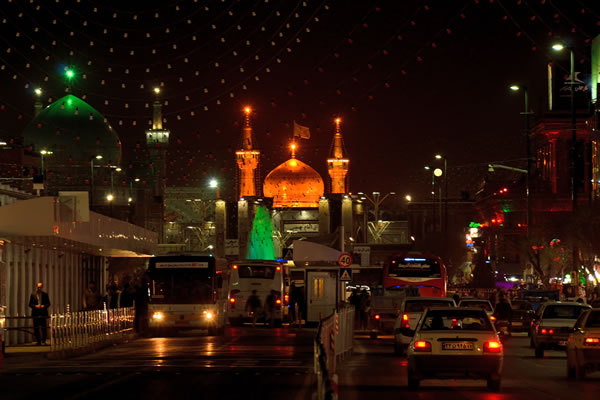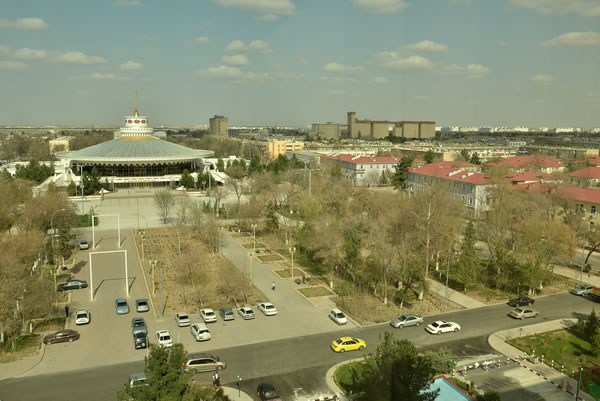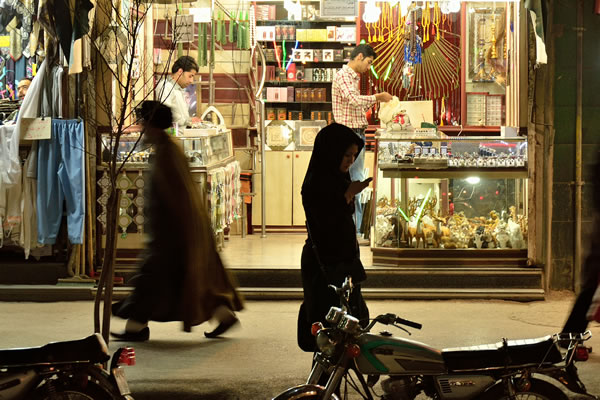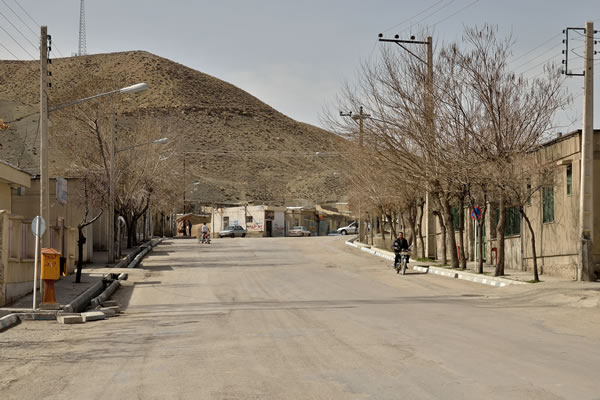English | Dutch |
|
| Border crossing: Iran – Turkmenistan | |
Ashgabat (Turkmenistan), March 17th 2013
|
|
| |
|
Land border crossing are often exciting. Especially when the crossing is between Iran and one of world’s most isolated countries: Turkmenistan. Add to this the fact that Turkmenistan isn’t really pleased with foreign travellers, which is substantiated by its visa policy. Travellers can only get a tourist visa if they book a guide for the whole period of their stay, and who will accompany the traveller during his whole trip through the country. The other option is the transit visa, which is often only limited to 3 days and don’t require a guide. We were very lucky to get in Tehran a 5-day transit visa for Turkmenistan, which gave us the opportunity to get a limited impression of this isolated country. We took the bus from the Meraj bus terminal in Iran’s holiest city Mashad, to the small town of Quchan, a little more than 100 kilometres away. The Meraj bus terminal is easy to reach by public transport from Mashad’s city centre. Just take the BRT-bus (2,000 Rials = € 0.04) from the holy shrine to the municipality bus station, from where city bus 85 (1,000 Rials = € 0.02) goes to the Meraj bus terminal. Buses to Quchan leave every hour and for 30,000 Rials (€ 0.65) per ticket, and you will be dropped one-and-a-half hours later at a big roundabout in the city centre in Quchan. From here, taxi’s leave when full for the small border village of Bajgiran. However, Bajgiran isn’t a busy border crossing, so you can not count on sharing the taxi with others, as we couldn’t. A taxi ‘dar baste’ (private) will cost you around 230,000 Rials (€ 4.80) for the 95 kilometre long journey to the border. But you have to bargain hard, because the drivers start the negotiation at one million Rials. |
|
 |
|
Mashad's Holy Shrine at night |
|
The journey to Bajgiran is beautiful. The road takes you through desolate terrain and slowly up to an altitude of around 1500 metres. It was March when we undertook the drive, and there was still snow in some parts of the mountains. The Kia Pride who took us to Bajgiran had some difficulties once in a while. Not because of the steep road, but because of its limited horsepower under its hood. Just before we entered Bajgiran, we had to show our passports at a military checkpoint. When the soldiers found out that we wanted to spend the night in Bajgiran, because our Turkmen transit visa started only the following day, they told the taxi driver to drop us first at the local government house. We were welcomed there friendly and after registration, our host told us that there is only one sleeping option in town, the Bajgiran Camping and Tourist Complex (a room costs 500,000 Rials which is around € 10). No choice, so the decision wasn’t difficult to make. We were the only guests in town and the hotel wasn’t staffed, which meant that we didn’t only get the key of the room, but also of the hotel. The central heating in the hotel wasn’t functioning and there was no hot water. But to keep warm at night, the host set alight the small petroleum stove in the room. We had to keep the windows open to make the petroleum smell bearable. When we asked him if there is a restaurant in the village, he said no. ‘You have to go to the small local ‘magazin’ (which is Russian for small shop) to buy some food’ was his suggestion. And that is what we did. We bought bread for lunch, dinner and breakfast of the following morning. There weren’t a lot of options for sandwich filling. We bought some Iranian Feta and Yoghurt with Shallots to do the job. The next morning at 8, we met our host again at the hotel to receive our passports. We asked him if he knew somebody who could change our last Iranian Rials into Turkmen Manats. Of course he knew, and five minutes later somebody arrived with a big bag of money. The guy was also in the possession of a car, and for 40,000 Rials (€ 0.90) he was willing to drop us at the border, some 2 kilometres uphill away. | |
 |
|
View on Ashgabat's Circus from our room in the Ak Altyn Hotel |
|
| The procedures at the Iranian side of the border were swift and efficient. On the other side, the Turkmen side, it was a disaster. The immigration hall was a chaos. Not because of the many travellers who wanted to cross the border, because there weren’t a lot of them, but because of the border traders. A significant number of traders were very busy with importing an uncountable number of cheap Persian carpets into Turkmenistan. And the problem was that these mainly Turkmen women, by the way often dressed in fantastic local dresses, had to go through the same procedures as us. So they were in the same queues and these ‘border tigresses’ were very handy in jumping the queues. It took us a lot of time and energy to get through the immigration. Behind us in the row, there was a small disturbance because some other travellers (Turkmen nationals) didn’t accept the unfair behaviour of the tradeswomen and pushed them back. The whole procedure could have taken longer, if the customs didn’t decide to let us through without searching our bags, and that seems to be a rarity. So, after two-and-a-half hours we were outside again, with an entry stamp but without the chaos which stayed behind us.
The Iranian-Turkmen border is located in the mountains, at an altitude of around 1500 metres. Public transport isn’t allowed at the Turkmen side of the border, so government-run VW minivans shuttle the travellers to and from the border, from a checkpoint 20 kilometres down the mountains. The 20-minute ride is spectacular but costs a whopping 10 US$ per person (30 Manat). But it doesn’t get better at the checkpoint at the bottom of the mountain where they check your passport again. Here you have to make a deal with a taxi driver to take you to Ashgabat, Turkmenistan’s capital city, another 20 kilometres away. The going price at the time of writing was 30 US$ for a taxi. Fortunately, we could share the taxi with a Turkmen traveller. And when we eventually arrived in Ashgabat, after a hectic morning, the story wasn’t over yet. It was extremely difficult to find a hotel room for a reasonable price. Some hotels were full, others were demolished or under renovation, so we eventually took a room in the expensive Ak Altyn hotel. It’s just for a couple of day we said. What a morning! | |
 |
|
Shopping in Mashad |
|
 |
|
Dusty little Bajgiran at the Iranian - Turkmen border |
|
 |
|
The decaying Bajgiran Tourist & Camping complex |
|
 |
|
Lunch in Bajgiran: bread, feta cheese and yoghurt |
|
 |
|
The petroleum stove that kept our room comfortable |
|